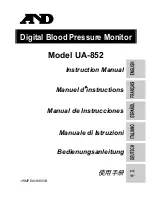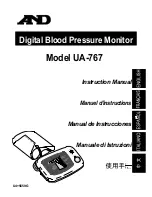
2) The power supply MOS FET Q101 carries out the ON/OFF operation of the control unit, by means of
U101 KA3842A. KA3842A is a PWM (pulse width modulation) IC chip, with 16 V starting voltage and
10 V cut-off voltage.
The following list shows the pin layout of KA3842A pulse width modulation IC chip.
Pin 1:
Feedback
Pin 2:
Compensation
Pin 3:
Current sensor
Pin 4:
Oscillator
Pin 5:
Ground (GND)
Pin 6:
Pulse output
Pin 7:
VCC
Pin 8:
VREF (5.1 V)
3) Overcurrent protection
R111 is a sensor resistor, and it has the function of increasing the current of this loop when the output
of the secondary side is either in the overloaded state or is insufficient.
Since the current passing through the R111 sensor resistor has voltage dropping effect, the operation
of the output pulse is stopped when a voltage lower than 1 Volt is detected at the pin number 3 of the
KA3842A 3chip, and the switch of the power supply MOS FET is kept in the “break” state until the
VCC voltage is charged up to 16 Volts, and the operation of U101 KA3842A is resumed. When it is not
clearly known whether there is voltage shortage or not, however, this circuit repeats the ON/OFF
switching, and the power supply LED lights up.
4) Starting circuit
The resistor R122 and R123 and the transistor U103 and diode D131 and resistor R169 and zener
diode ZD101 are for the starting operation. When the circuit starts its operation, the power supply
transformer T101 supplies the auxiliary 12 Volt power to the control IC chip U101 via pins 6 and 7 of
the winding transformer T101.
5) Synchronization circuit
The synchronization signal is induced from the fly-back transformer (FBT), and carries out the syn-
chronization with the power supply frequency. The frequency range is from 31 kHz to 70 kHz, and the
component elements of the synchronization circuit are C114, R116, D109, R115 and R117.
6) Feedback circuit
The feedback circuit loop induces the 12 V voltage through the pin 6 and the pin 7 of the power supply
transformer. That voltage is connected with the pin 3 of the IC chip U101 by passing through U103,
R122, R123 and passing next through R10A, VR101 and R151. This is a regular loop.
7) Snubber circuit
The snubber circuit has the function of clamping the ON/OFF spikes of the power supply MOS-FET,
and its component elements D105, C106, R106 make up a snubber that turns OFF the power supply
MOS-FET.
8) Secondary rectifier and smoothing rectifier
The secondary rectifier is a harmonic rectifier consisting of D111, C124 and R128, and it works as a
snubber circuit as well. The capacitors C120 and C138 are the smoothing rectifier working on the 49
Volt DC output. There are also other DC outputs, such as 80 Volt (D110), 13.5 Volt (D112) and 6.3 Volt
(D113).
39
Summary of Contents for MultiSync 75F-3
Page 56: ...DDC Flow Chart 53 ...
Page 57: ...Master I C Flow Chart 54 ...
Page 58: ...Master I C restart mode Flow Chart 55 ...
Page 59: ...Slave I C Flow Chart 56 ...
Page 61: ...BLOCK DIAGRAM I C bus autosync deflection controller for PC monitors TDA4857 58 ...
Page 71: ...I C bus autosync deflection controller for PC monitors TDA4857 68 APPLICATION INFORMATION ...
Page 77: ...74 8 Monolithic triple 13 5nS CRT driver ...
Page 78: ...75 ...
Page 79: ...76 ...
Page 80: ...77 ...
Page 102: ......
Page 103: ......
Page 104: ......
















































